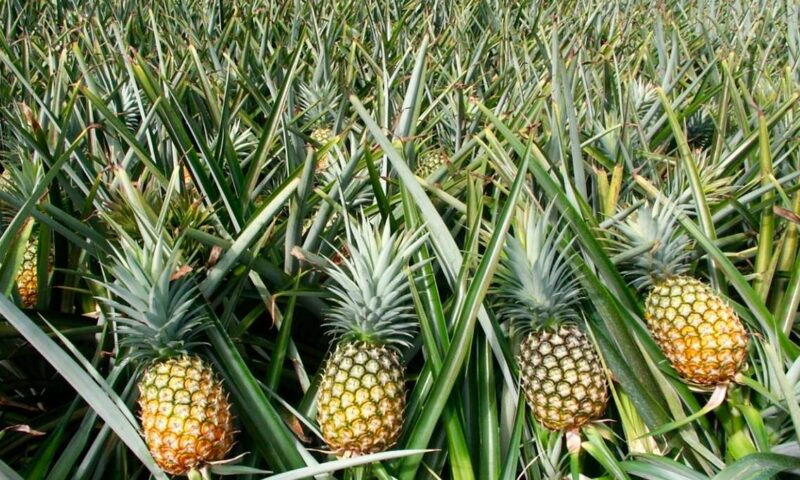By Spy Uganda
Pineapples are fairly drought tolerant and can thrive with very little water. If you are in a low water area, or if you never remember to water your plants, a thick layer of mulch should be incorporated to reduce evaporation.
You might also want to consider growing your pineapples in a slightly shaded area, especially if you live in a tropical or sub-tropical area. If, however, you live in a region with plentiful rain, that’s okay too.

If you have the pineapple in a pot, be sure it has well-draining soil and drainage holes. Don’t drown the pineapple by overwatering though! Additional pineapple plant care is minimal. Pineapple leaves uptake most of their nutrition.

For the first few months after planting, just leave the plant alone– no fertilizer, that is. After that, you can use liquid fertilizer such as fish emulsion or seaweed extract. Make a diluted solution and use a watering can to apply to the soil and the leaves.
Stay away from artificial or concentrated fertilizers, which can burn the plant. If you use chicken manure, sprinkle it on the soil at the base of the plant and into the bottom leaves. The color of the leaves will be a telltale sign of whether or not to feed the plant. If they get a reddish/purple tinge, it’s time to feed the pineapple.

The ideal way to feed your pineapple is to incorporate compost into the soil prior to planting and mulch heavily around the plant. Some of the mulch/compost will end up in the lower leaves as well as around the shallow root system, and as it breaks down, it will nourish the plant.
The only other thing to pay attention to is if you live in a cooler climate. If so, then you probably have the pineapple outdoors in a pot. Be sure to move the plant inside in an area with lots of sun as the weather begins to cool. Pineapples are no match for frost, so move it inside well before the weather turns.





